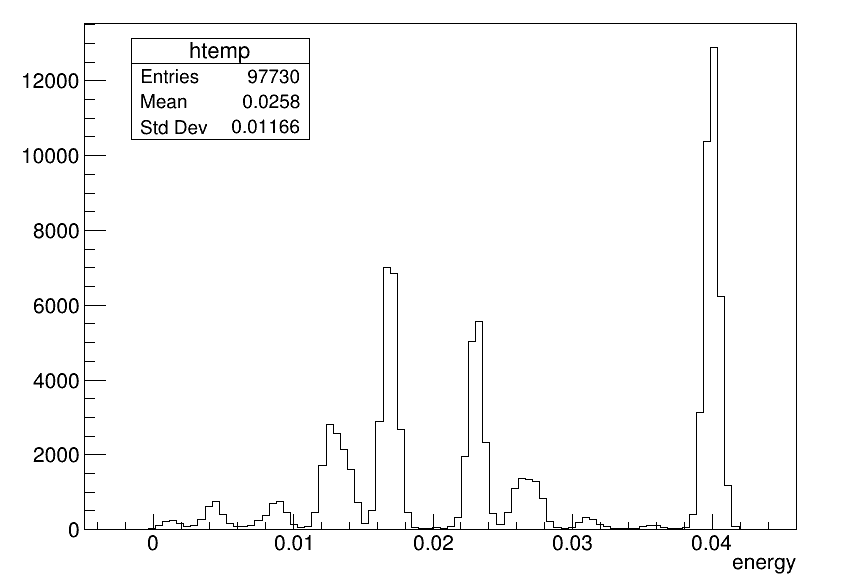Hi all,
I defined a CdTe detector array with 3600 detector cells and the size of each cell is 0.1*0.1*0.75 mm^3. I use a 40 keV monochromatic x-ray to test the deposited energy inside the detector array. The distribution of deposited energy is below. In the plot, the x-axis is the deposited energy in unit of MeV.
Besides, the peak of 40keV. There are peaks at energy 23.15 keV and 27.46 keV, which correspondes the K-fluorescence of Cd and Te atom. I thought most K-fluorescence x-ray would escape from the detector array and the spectrum would not have peaks at 23.15keV and 27.46keV. But my sensitive detectors recorded the K-characteristic lines of detector material. Are this results correct?
G4int copyNumber = aStep->GetPreStepPoint()->GetTouchableHandle()->GetCopyNumber();
G4double edep= aStep->GetTotalEnergyDeposit();
I use this codes to recond the deposited energy in each detector cell and then sum all the deposits in the same detector cell.
here is the output of one event of the 40keV incoming x-ray:
ID: 224 deposit: 3.5354 keV particle: gamma
ID: 164 deposit: 3.9941 keV particle: gamma
ID: 164 deposit: 447.442 eV particle: e-
ID: 164 deposit: 18.7111 keV particle: e-
ID: 224 deposit: 518.642 eV particle: e-
ID: 224 deposit: 12.7934 keV particle: e-
summary: id: 224 total energy: 16.8474 keV
summary: id: 164 total energy: 23.1526 keV
-------- event ID: 99940 end---------
Nowadays, In reality detector design, will manufacturers use some technique to void the loss of energy caused by the K-fluoroscence?
